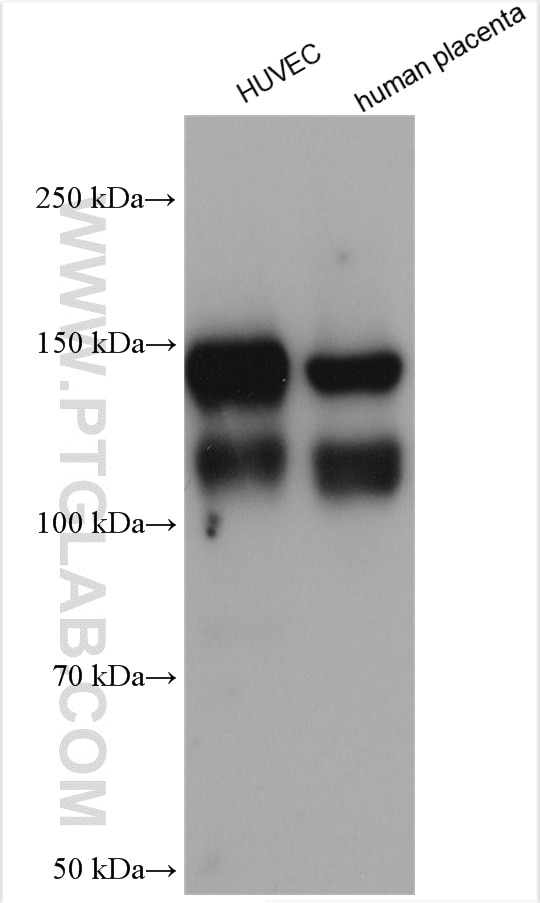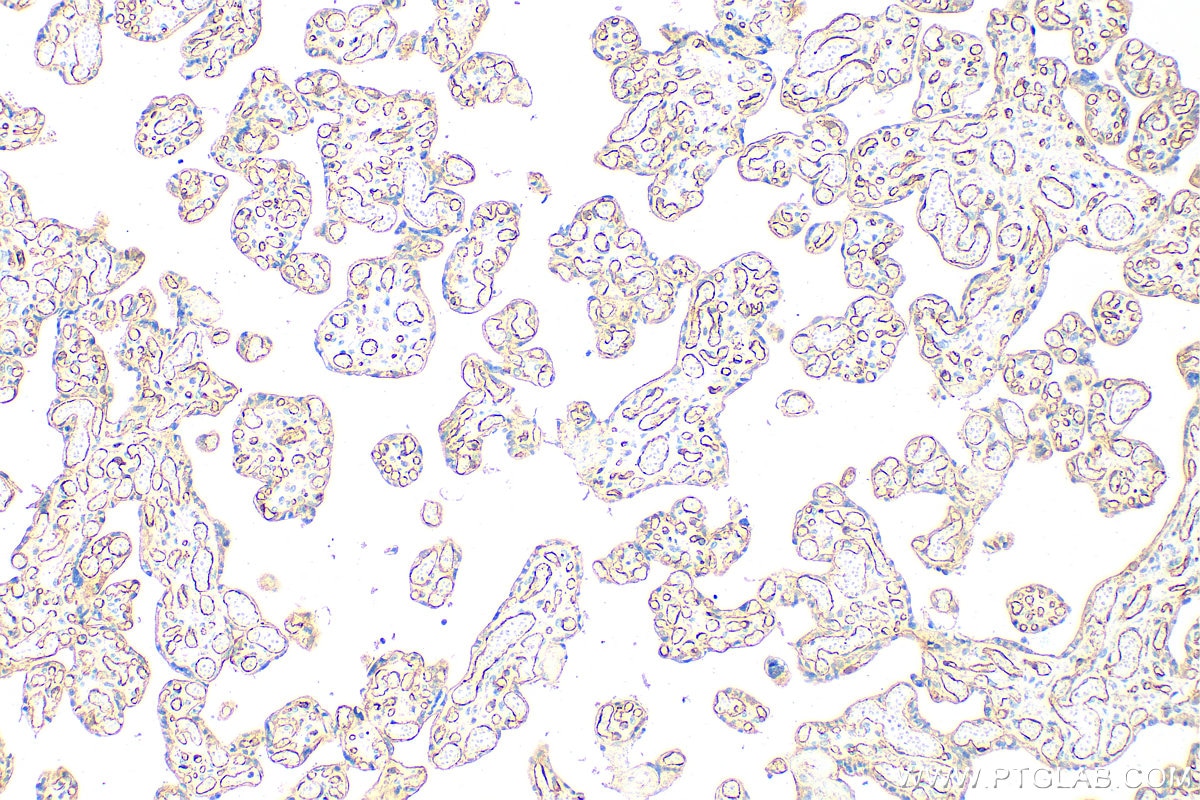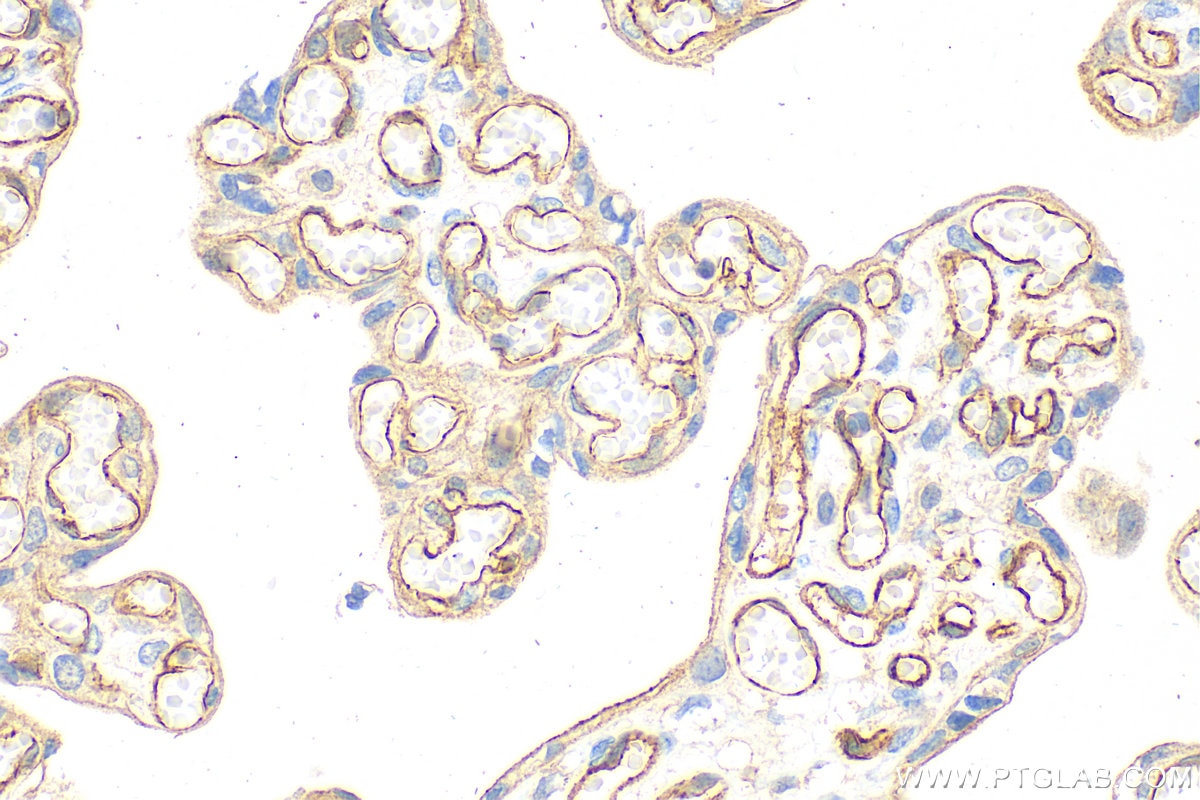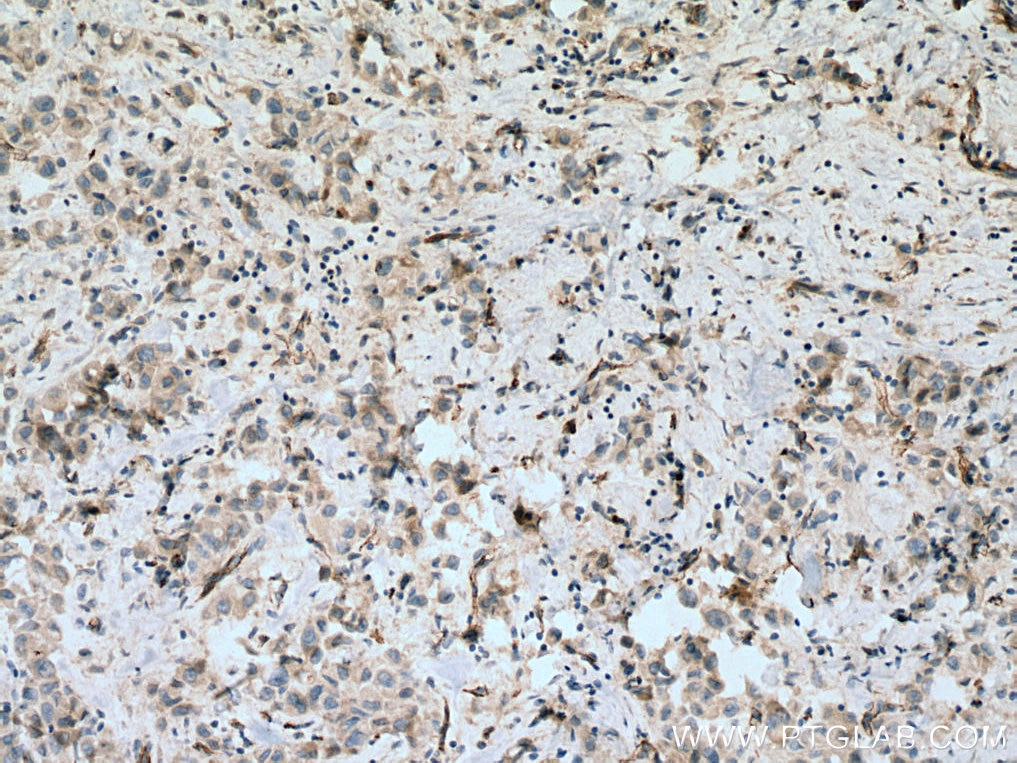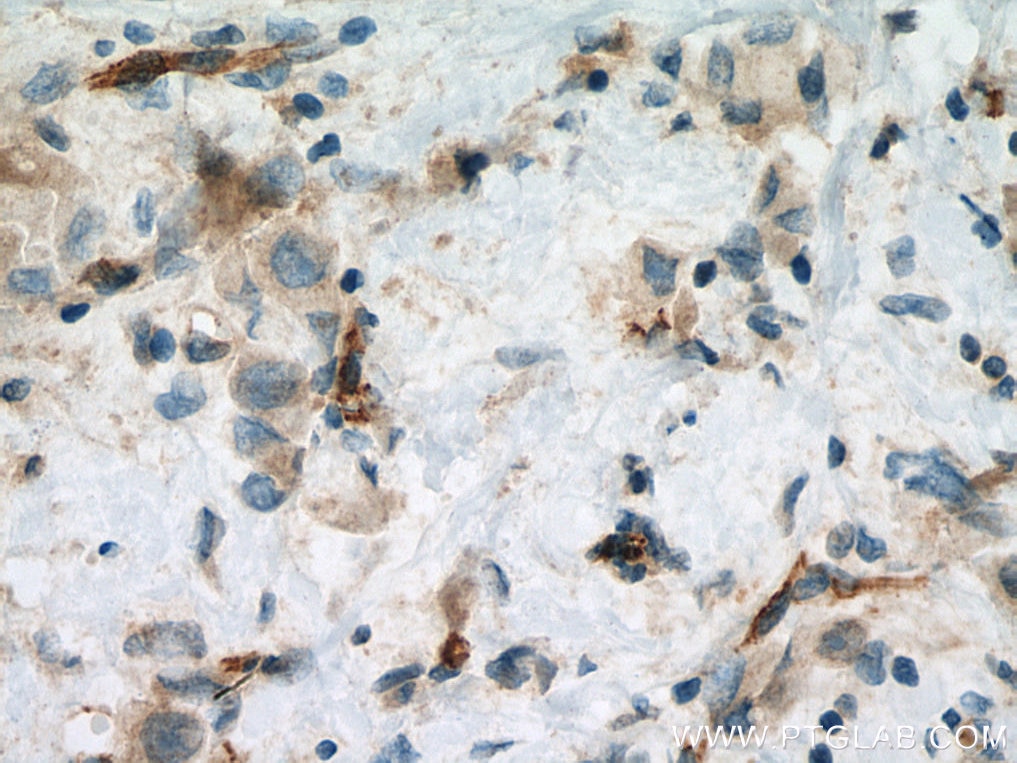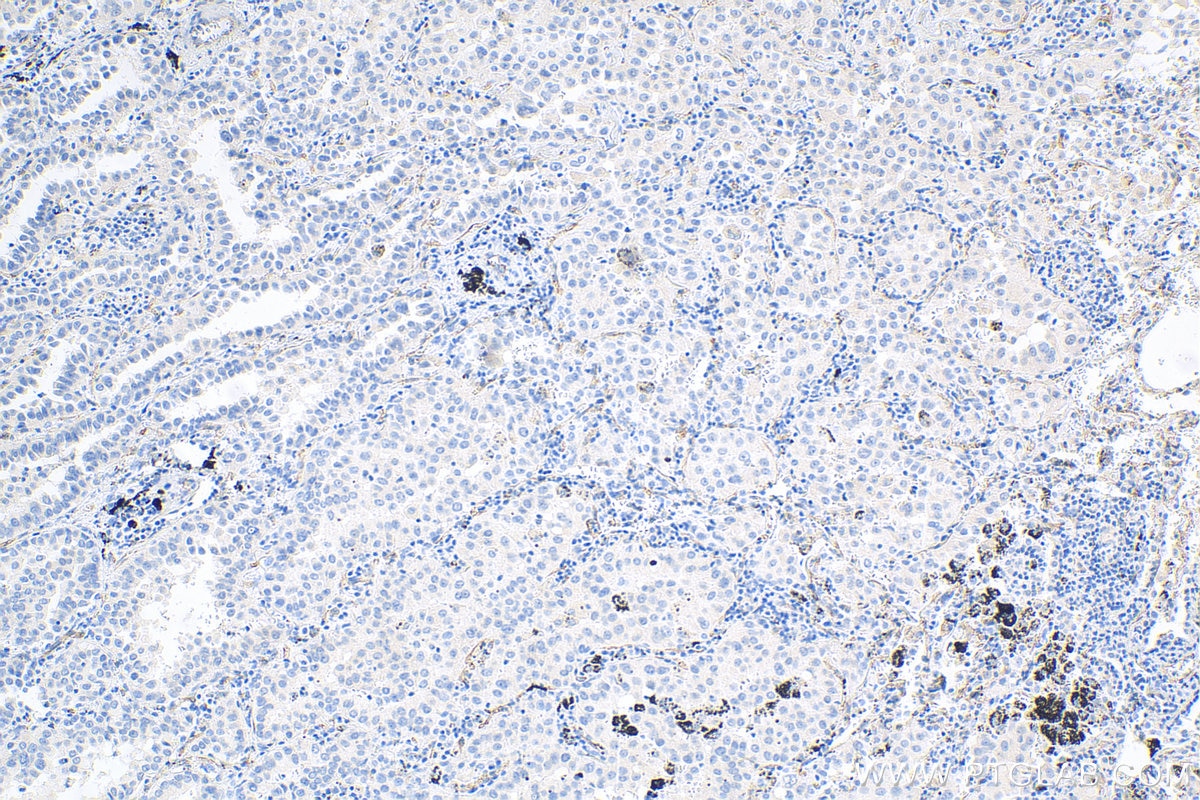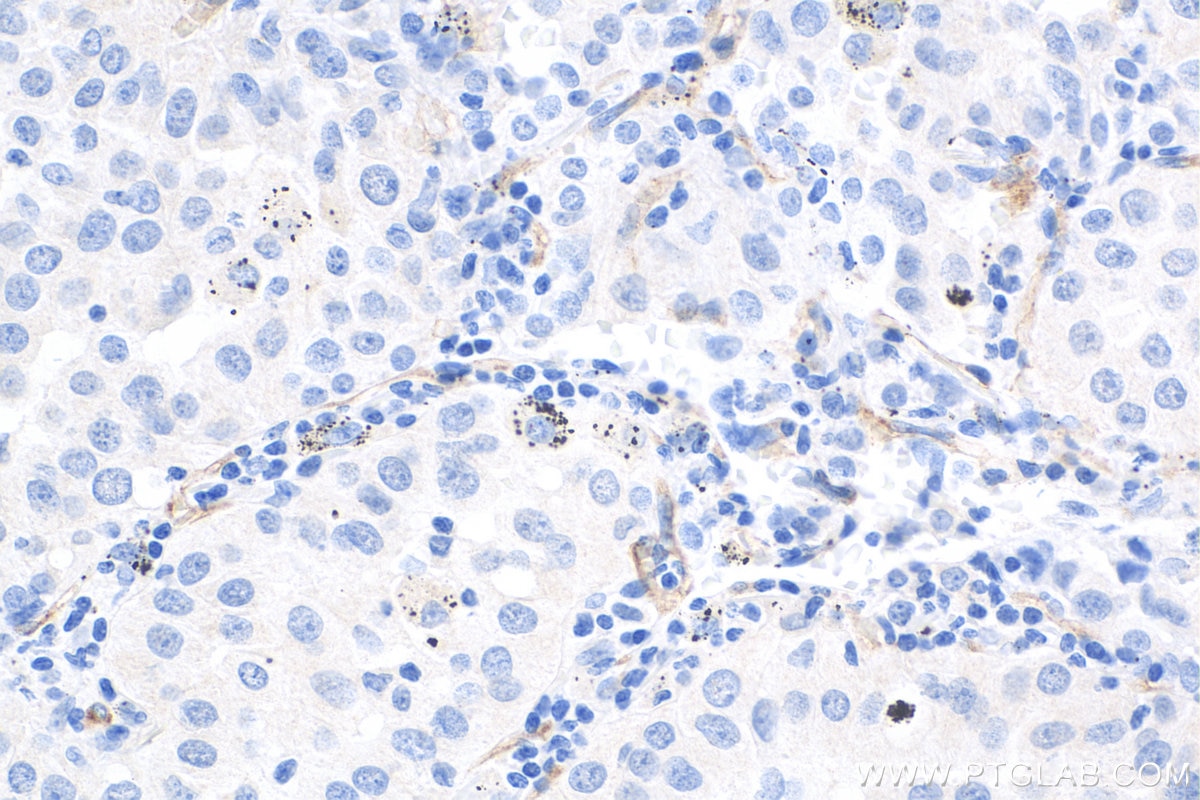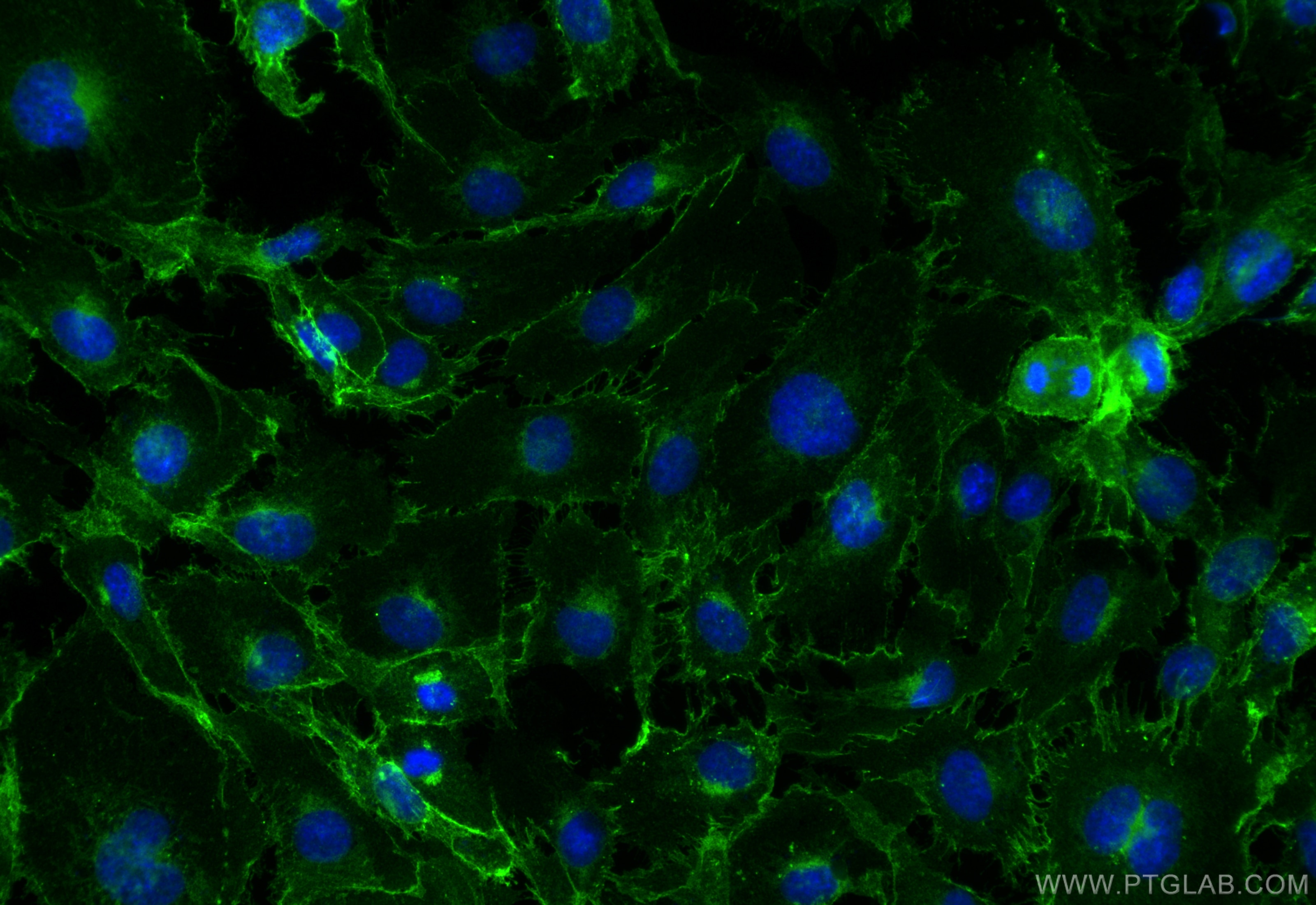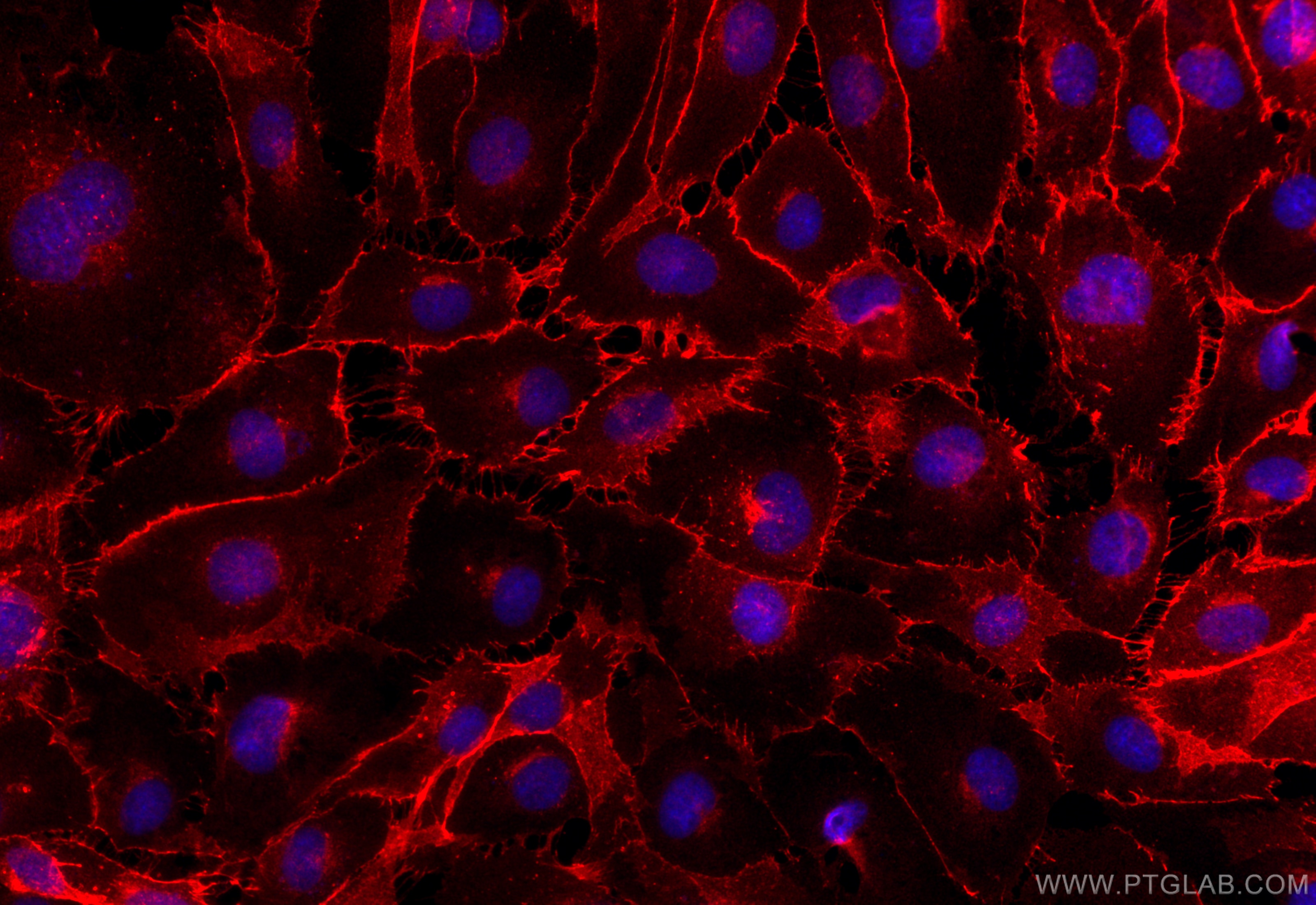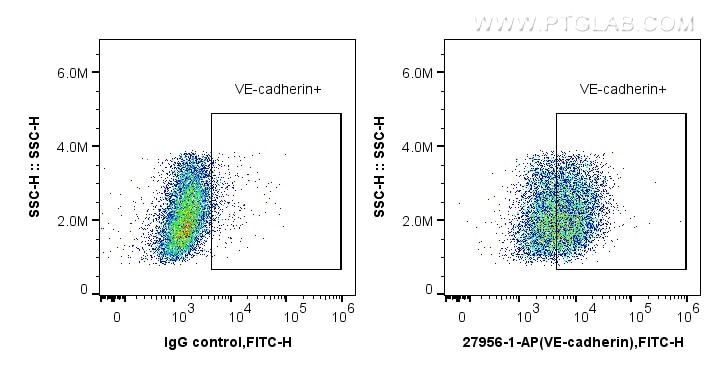Tested Applications
| Positive WB detected in | HUVEC cells, human placenta tissue |
| Positive IHC detected in | human placenta tissue, human breast cancer tissue, human lung cancer tissue Note: suggested antigen retrieval with TE buffer pH 9.0; (*) Alternatively, antigen retrieval may be performed with citrate buffer pH 6.0 |
| Positive IF/ICC detected in | HUVEC cells |
| Positive FC detected in | HUVEC cells |
Recommended dilution
| Application | Dilution |
|---|---|
| Western Blot (WB) | WB : 1:1000-1:4000 |
| Immunohistochemistry (IHC) | IHC : 1:500-1:2000 |
| Immunofluorescence (IF)/ICC | IF/ICC : 1:50-1:500 |
| Flow Cytometry (FC) | FC : 0.40 ug per 10^6 cells in a 100 µl suspension |
| It is recommended that this reagent should be titrated in each testing system to obtain optimal results. | |
| Sample-dependent, Check data in validation data gallery. | |
Published Applications
| WB | See 17 publications below |
| IHC | See 3 publications below |
| IF | See 12 publications below |
Product Information
27956-1-AP targets VE-cadherin/CD144 in WB, IHC, IF/ICC, FC, ELISA applications and shows reactivity with human samples.
| Tested Reactivity | human |
| Cited Reactivity | human |
| Host / Isotype | Rabbit / IgG |
| Class | Polyclonal |
| Type | Antibody |
| Immunogen |
CatNo: Ag27487 Product name: Recombinant human CDH5 protein Source: e coli.-derived, PGEX-4T Tag: GST Domain: 54-241 aa of NM_001795 Sequence: MHIDEEKNTSLPHHVGKIKSSVSRKNAKYLLKGEYVGKVFRVDAETGDVFAIERLDRENISEYHLTAVIVDKDTGENLETPSSFTIKVHDVNDNWPVFTHRLFNASVPESSAVGTSVISVTAVDADDPTVGDHASVMYQILKGKEYFAIDNSGRIITITKSLDREKQARYEIVVEARDAQGLRGDSGT Predict reactive species |
| Full Name | cadherin 5, type 2 (vascular endothelium) |
| Calculated Molecular Weight | 88 kDa |
| Observed Molecular Weight | 120-140 kDa |
| GenBank Accession Number | NM_001795 |
| Gene Symbol | VE-cadherin |
| Gene ID (NCBI) | 1003 |
| RRID | AB_2918136 |
| Conjugate | Unconjugated |
| Form | Liquid |
| Purification Method | Antigen affinity purification |
| UNIPROT ID | P33151 |
| Storage Buffer | PBS with 0.02% sodium azide and 50% glycerol, pH 7.3. |
| Storage Conditions | Store at -20°C. Stable for one year after shipment. Aliquoting is unnecessary for -20oC storage. 20ul sizes contain 0.1% BSA. |
Background Information
Cadherins are a family of transmembrane glycoproteins that mediate calcium-dependent cell-cell adhesion and play an important role in the maintenance of normal tissue architecture. Vascular endothelial cadherin (VE-cadherin), also known as Cadherin-5 (CDH5) or CD144, is a member of the type II classical cadherin family of cell adhesion proteins (PMID: 21269602). VE-cadherin is expressed specifically in endothelial cells and mediates homophilic adhesion in the vascular endothelium (PMID: 1522121; 8555485; 21269602). VE-cadherin plays a role in the organization of lateral endothelial junctions and in the control of permeability properties of vascular endothelium (PMID: 1522121). VE-cadherin has also been shown to be required for angiogenesis (PMID: 16473763; 18162609). The calculated molecular weight of VE-cadherin is 88 kDa and the apparent molecular weight of 120-140 kDa is higher due to post-translational glycosylation and phosphorylation (PMID: 10460833; 29894844). Full-length VE-cadherin can be proteolytically cleaved to generate a fragment of 90-100 kDa (PMID: 9786462; 22064597).
Protocols
| Product Specific Protocols | |
|---|---|
| FC protocol for VE-cadherin/CD144 antibody 27956-1-AP | Download protocol |
| IF protocol for VE-cadherin/CD144 antibody 27956-1-AP | Download protocol |
| IHC protocol for VE-cadherin/CD144 antibody 27956-1-AP | Download protocol |
| WB protocol for VE-cadherin/CD144 antibody 27956-1-AP | Download protocol |
| Standard Protocols | |
|---|---|
| Click here to view our Standard Protocols |
Publications
| Species | Application | Title |
|---|---|---|
Nat Commun FNIP1 abrogation promotes functional revascularization of ischemic skeletal muscle by driving macrophage recruitment | ||
Adv Healthc Mater Colon-Targeted Ginseng Polysaccharides-Based Microspheres for Improving Ulcerative Colitis via Anti-Inflammation and Gut Microbiota Modulation | ||
Bioengineering (Basel) Organotypic 3D Co-Culture of Human Pleura as a Novel In Vitro Model of Staphylococcus aureus Infection and Biofilm Development | ||
Pharmaceuticals (Basel) CXCL8 Promotes Endothelial-to-Mesenchymal Transition of Endothelial Cells and Protects Cells from Erastin-Induced Ferroptosis via CXCR2-Mediated Activation of the NF-κB Signaling Pathway | ||
World J Diabetes Tongxinluo promotes endothelium-dependent arteriogenesis to attenuate diabetic peripheral arterial disease | ||
Front Cell Infect Microbiol Analysis of miRNAs Involved in Mouse Heart Injury Upon Coxsackievirus A2 Infection. |

